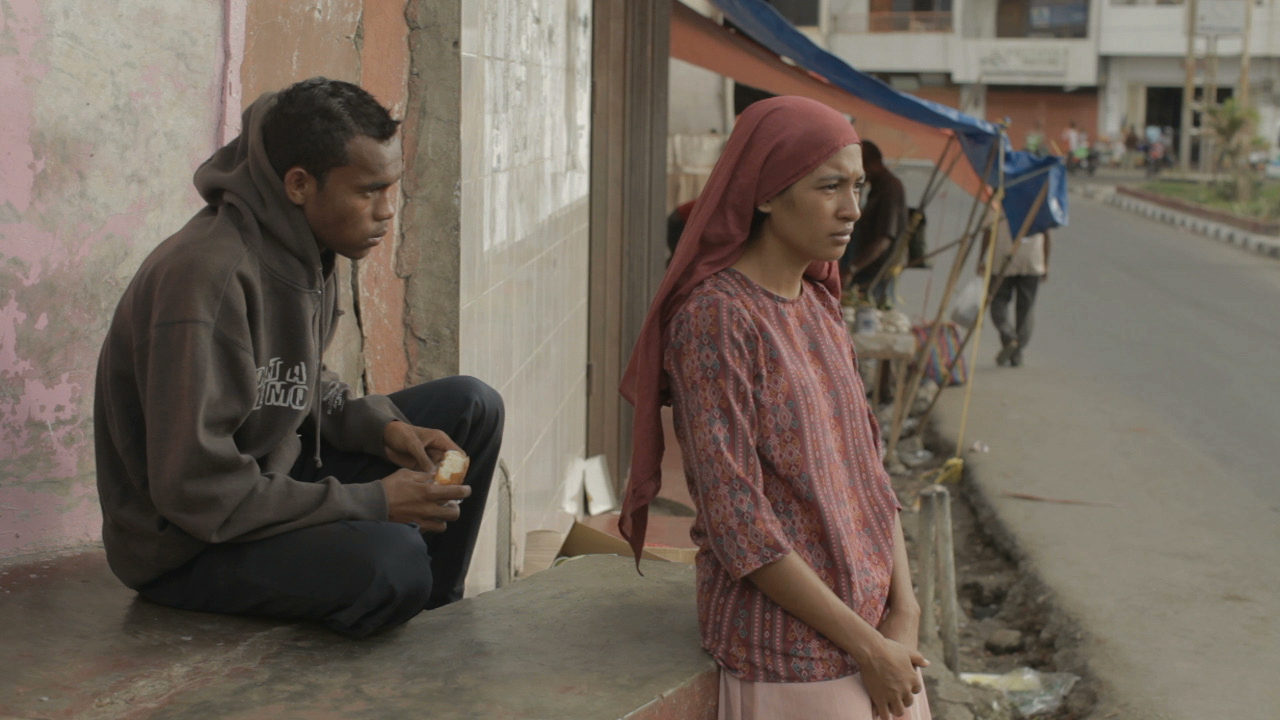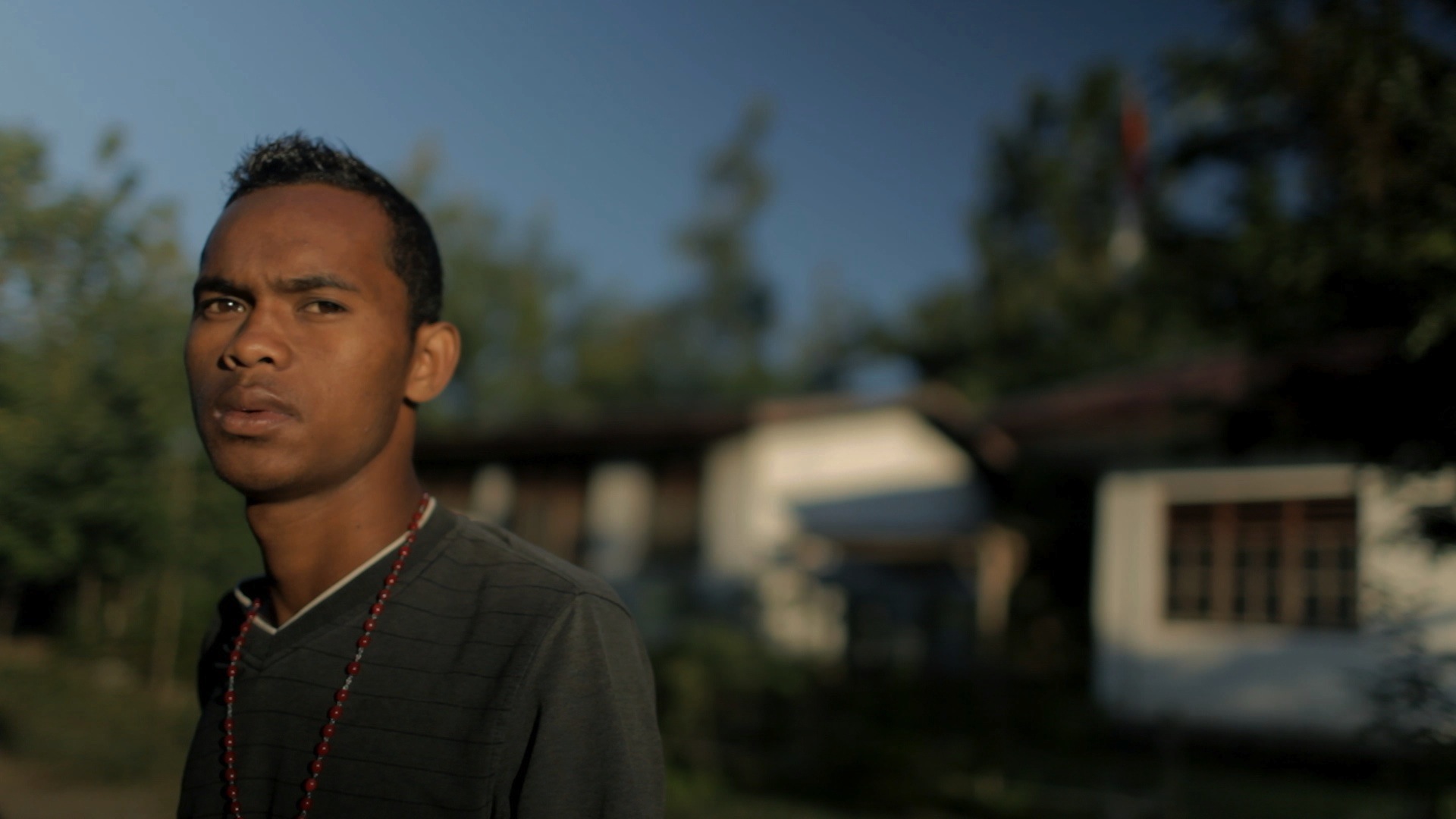Sandeep Ray
Atambua - Reproduced with permission from Riri Riza
Atambua 39˚ Celsius is not a pretty film. Like the dry and fallow landscapes of Atambua, a frontier town at the edge of the Nusa Tenggara Timor region, the emotional terrains of its characters are bleak and incomplete. Shot with a small, roving crew, featuring actors whose own life experiences mimic the plot, this surprisingly tender film has a storyline that is simple but not thin.
A gradual coalescing of three individuals adrift in in this barren land, Atambua explores the frugal, fractured existence of the dispossessed who left Timor-Leste in 1999, and moved throughout the islands of Nusa Tenggara Timor. Reynaldo (Petrus Beyleto) is an alcoholic bus driver unable to remain sober enough to confront his own conscience. His son Joao (Gudino Soares) clings to hope and his childhood by forlornly listening to a series of tape recordings made by his mother beseeching both father and son to return home. The third character, Nikkia (Putri Moruk) returns to Atambua in search of her grandfather’s elusive existence and perhaps, her own innocence.
Director, Riri Riza’s greatest strength is the re-creation of the environment his characters inhabit. Their homes are minimal constructions on arid, hard plots of land. There are few possessions for the large tin doors to protect. Memories are preserved through faded photographs framed behind grimy glass and in dusty weaves of cloth brought years ago from Timor-Leste. Water for drinking and personal hygiene is scarce. In the centre of town are a few dimly-lit pool halls and a gymnasium where the sinewy Joao and his friends lift weights when they are not aimlessly driving around on small motorcycles.
 Still from Atambua - Reproduced with permission from Riri Riza
Still from Atambua - Reproduced with permission from Riri Riza
Every so often the story is interrupted with a scene of local ritual – a religious procession, a sermon, a debate. Cameraman Gunnar Nimpunno’s unobtrusive, fluid style gives the film an intimate, ethnographic feel. We are treated to the gorgeous beauty of the Timor Sea that lies just beyond the city limits. The characters blend almost seamlessly into their surroundings, suspending for us the artifice of cinematic construction and drawing us effortlessly into the desolate, quotidian texture of Atambua.
Even in the bleakest of situations, hormones will rage for teenagers. The adolescent Joao is bewitched by the beautiful, curly-haired Nikkia who speaks little and torments the boy with long, sultry gazes. She soon recruits the willing Joao to haul rocks for her. Her mission is to create a shrine to the memory of her recently deceased grandfather. Joao’s only respite from a life spent cleaning up his father’s drunken vomit, is tagging along with Nikkia in the hope of winning her affection.
The story is jostled from the dreariness it seems resigned to when Reynaldo loses his job for being intoxicated and subsequently ends up in jail for attacking a man who accuses him of murder. Nikkia, surprised and confused when Joao clumsily and forcefully declares his passion for her, flees to Kupang on the western edge of the island.
It is only towards the end of the film that the characters’ intimate thoughts and introspections guide the narrative via a three-way voice-over, almost jolting us out of its languid, observational flow. We hear that Nikkia had been raped repeatedly when she had first arrived as a refugee. Reynaldo sobers up and realises that he needs to return home and face his past and his family. All three reunite in Kupang where Nikkia forgives Joao and bids both father and son well for their journey to Timor-Leste. Without passports, they are forced to take an illegal, circuitous route back home.
 Still from Atambua - Reproduced with permission from Riri Riza
Still from Atambua - Reproduced with permission from Riri Riza
Riza shows directorial restraint by refusing to over-sentimentalise the reunion at the end. ‘It’s about the greater spiritual longing of many people there to find their home and place of belonging. That is the main theme. To show one family’s reunion would have taken away from that’, he tells me after the film’s European premiere in Rotterdam.
We can only look forward to be taken on another cinematic journey by Riri Riza, who has proven to be one of the boldest risk-takers in Indonesian cinema with this small offering – a gem of a film but, like its characters, not devoid of rough edges. Along with versatile producer Mira Lesmana of Miles Productions (http://milesfilms.net/en/atambua39celcius/), Riza might have launched the careers of the world’s first Tetum speaking movie stars.
Sandeep Ray (ray.sandeep@gmail.com) is a filmmaker and a doctoral candidate in the Department of History at the National University of Singapore.
